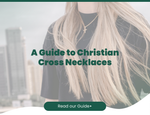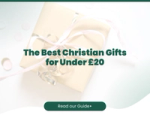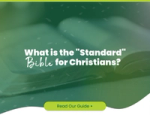Mothering Sunday - The Day that Nearly Died
Les Ellison
Mothers’ Day and Mothering Sunday are not the same. The two days dedicated to mothers and motherhood are very different celebrations with very different roots but increasingly similar customs and traditions worldwide.
In the UK and Europe the day given to all things motherly is fixed as the fourth Sunday mid way through the 40 day Christian religious fast of Lent. Originally known as Laetare Sunday, Mothering Sunday was dedicated to Jesus’ mother, Mary, and to the ‘mother church’.
Mothering Sunday: a new and ancient tradtion
The name Laetare Sunday came from the first line of the Latin hymn ‘Laetare Jerusalem’ (O be joyful, Jerusalem) traditionally the introit to that day’s Mass. In the Middle Ages, Mothering Sunday day was know by various names including Refreshment Sunday, Mid-Lent Sunday and Rose Sunday; the day the pope sent golden roses as blessings for Catholic sovereigns.
A relaxation of the Lenten fast, flowers were allowed on the high altar and priests had the option of rose coloured vestments in place of the violet normally worn during Lent. Even weddings, otherwise banned during Lent, could be celebrated on Mothering Sunday as an encouragement that Easter was at last within sight.
Sometime in the sixteenth century, Mothering Sunday acquired the tradition of ‘a-mothering’. People would visit the ‘mother church’; usually the original place of Christian mission to their locality, often a cathedral. In the centuries that followed more and more people found them selves displaced by social upheaval or forced to find work away from their home parish.
Mothering Sunday: the beginning of the end
In the seventeenth, eighteenth and nineteenth centuries Mothering Sunday became a day for families separated by economic circumstanced to reunite and celebrate long before the instigation of formal holidays from work. Mothers naturally became the focus of the family gathering and gifts of spring flowers became a traditional feature.
By the 1920s people were used to the idea of a mobile population uprooted and moving around the world as opportunities and demands changed in an ever changing world. With the experience of mass migration, world war and global pandemic the tradition of Mothering Sunday had begun to lapse.
Mothering Sunday might have passed completely out of modern life except for the daughter of Nottingham vicar, Constance Penswick-Smith. Her 1921 book inspired the Mothering Sunday Movement which pressed for the revival of the Mothering Sunday tradition.
In the UK today, Mothering Sunday is largely a combination of English church traditions and very different roots and customs of the American Mothers’ Day. But that’s another story.
Mothering Sunday: the trivia files
Another tradition associated with Mothering Sunday is the practice of "clipping the church", whereby the congregation form a ring around their church building and, holding hands, embrace it.
Latest Blogs

Gifts
Finding Your Symbol of Faith: A Guide to Christian Cross Necklaces
Looking for the perfect symbol of faith? Explore our guide to Christian cross necklaces, from rustic wooden designs and sturdy men's chains to elegant silver pendants.

Gifts
The Best Christian Gifts for Under £20
Looking for a meaningful gift that won't break the bank? Explore our guide to the best Christian gifts under £20, from inspiring journals to beautiful home decor.

Gift Guide
15 Confirmation Gift Ideas for Boys and Girls
Celebrating a confirmation? Discover 15 meaningful gift ideas for boys and girls, from youth Bibles and jewellery to inspiring journals and keepsakes.

Bible
30+ Powerful Quotes About the Bible (For Inspiration in 2026)
Looking for inspiration? Discover a curated collection of the most powerful quotes about the Bible, from famous historical figures to modern theologians and Scripture itself.

Bibles
What is the "Standard" Bible for Christians?
Is there an "official" Bible that all Christians use? We explain the difference between the NIV, KJV, and ESV, and help you find the standard text for your church or personal reading.

Bible
"I Keep Failing to Read the Bible" – 5 Tips to Make the Habit Stick
Do you start a Bible reading plan only to quit a few weeks later? Stop the cycle of guilt. Here are 5 psychological tips and practical changes to help you build a Bible habit that actually lasts in 2026.
